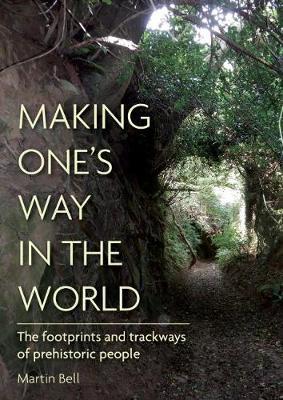Making One's Way in the World

Making One's Way in the World
The premise is that archaeologists tend to focus on 'sites' while neglecting the patterns of habitual movement that made them part of living landscapes. Evidence of past movement is considered in a multi-scalar way from the individual footprint to the long distance path including the traces created in vegetation by animal and human movement. It is argued that routes may be perpetuated over long timescales creating landscape structures which influence the activities of subsequent generations. In other instances radical changes of axes of communication and landscape structures provide evidence of upheaval and social change. Palaeoenvironmental and ethnohistorical evidence from the American North West coast sets the scene with evidence for the effects of burning, animal movement, faeces deposition and transplantation which can create readable routes along which are favoured resources.
Evidence from European hunter-gatherer sites hints at similar practices of niche construction on a range of spatial scales. On a local scale, footprints help to establish axes of movement, the locations of lost settlements and activity areas. Wood trackways likewise provide evidence of favoured patterns of movement and past settlement location. Among early farming communities alignments of burial mounds, enclosure entrances and other monuments indicate axes of communication. From the middle Bronze Age in Europe there is more clearly defined evidence of trackways flanked by ditches and fields. Landscape scale survey and excavation enables the dating of trackways using spatial relationships with dated features and many examples indicate long-term continuity of routeways. Where fields flank routeways a range of methods, including scientific approaches, provide dates.
Prehistorians have often assumed that Ridgeways provided the main axes of early movement but there is little evidence for their early origins and rather better evidence for early routes crossing topography an
PRP: 438.00 Lei
Acesta este Prețul Recomandat de Producător. Prețul de vânzare al produsului este afișat mai jos.
350.40Lei
350.40Lei
438.00 LeiLivrare in 2-4 saptamani
Descrierea produsului
The premise is that archaeologists tend to focus on 'sites' while neglecting the patterns of habitual movement that made them part of living landscapes. Evidence of past movement is considered in a multi-scalar way from the individual footprint to the long distance path including the traces created in vegetation by animal and human movement. It is argued that routes may be perpetuated over long timescales creating landscape structures which influence the activities of subsequent generations. In other instances radical changes of axes of communication and landscape structures provide evidence of upheaval and social change. Palaeoenvironmental and ethnohistorical evidence from the American North West coast sets the scene with evidence for the effects of burning, animal movement, faeces deposition and transplantation which can create readable routes along which are favoured resources.
Evidence from European hunter-gatherer sites hints at similar practices of niche construction on a range of spatial scales. On a local scale, footprints help to establish axes of movement, the locations of lost settlements and activity areas. Wood trackways likewise provide evidence of favoured patterns of movement and past settlement location. Among early farming communities alignments of burial mounds, enclosure entrances and other monuments indicate axes of communication. From the middle Bronze Age in Europe there is more clearly defined evidence of trackways flanked by ditches and fields. Landscape scale survey and excavation enables the dating of trackways using spatial relationships with dated features and many examples indicate long-term continuity of routeways. Where fields flank routeways a range of methods, including scientific approaches, provide dates.
Prehistorians have often assumed that Ridgeways provided the main axes of early movement but there is little evidence for their early origins and rather better evidence for early routes crossing topography an
Detaliile produsului









